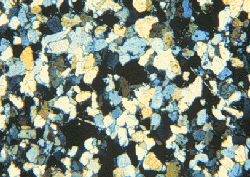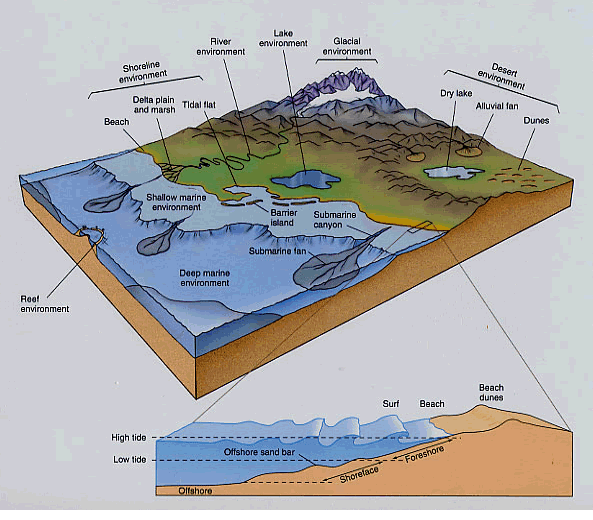 |
| Type of Rock: | Type of sediment: | Description: | Grain size: |
| Sedimentary rock | Detrital | Quartz predominates | 1/16 to 2mm |
|
THIN SECTION A thin section is made by grinding down a slice of rock which has been glued to a glass slide until it reaches a thickness of about 0.03mm (30 microns). At this thickness most minerals become more or less transparent and can therefore be studied by a microscope using transmitted light. |
 |
| Depositional Environments of Sandstone |
| Sand that commonly forms sandstones is found in two very important places: beaches and deserts. So, when geologists see a sandstone, how do they tell whether it was deposited in a beach or desert environment? There are two ways: One way is to look at the layering in the rock to see whether it mimics the pattern of sand dunes alone (desert) or whether there are signs of water deposition, such as preserved ripple marks, flat layers representing the swash zone of a beach (the place where the waves come onto the beach and flatten the sand out) or evidence of waves from large storms moving the sand underwater. Another way to distinguish between desert and beach deposits is to look at the rock above and below the layer you are looking at. |
Environments of deposition for different sedimentary rocks
